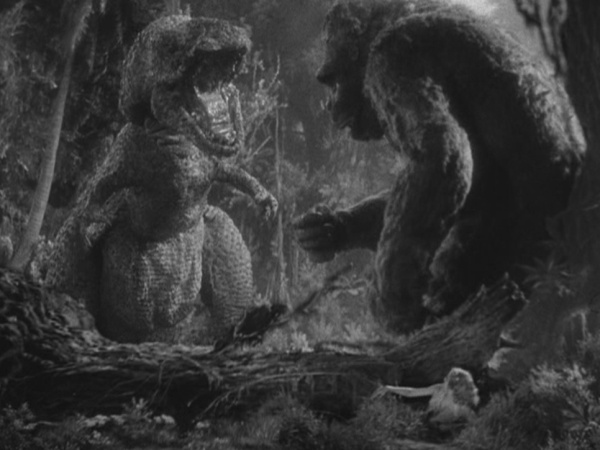King Kong (Merian C. Cooper & Ernest B. Schoedsack, 1933) and
King Kong (Peter Jackson, 2005)
If you ever wanted to be reassured that it’s okay to like big special effects blockbusters, have a look at the reputation of the 1933 version of King Kong. The film is a solid, rolled-gold classic, and makes a strong showing in any of the dubious-but-fun movie popularity contests: it is in the American Film Institute’s Top 100 List; Christopher Tookey’s The Critics Film Guide cites it has having an average critical rating of 9.53 out of 10; the Internet Movie Database has it in its top 250 user-rated films; and so on. Received wisdom is a wonderful thing: once a film is a famous classic, and several decades old, it is easy to accept its status, and not think about why the film is so revered. Yet with King Kong it pays to ask the question. For the original King Kong is a forerunner to all the light-on-plot, big-on-special-effects blockbusters of recent years: as such, its continuing fame is something of a challenge to conventional critical wisdom, which tends to be dismissive of this kind of filmmaking.
